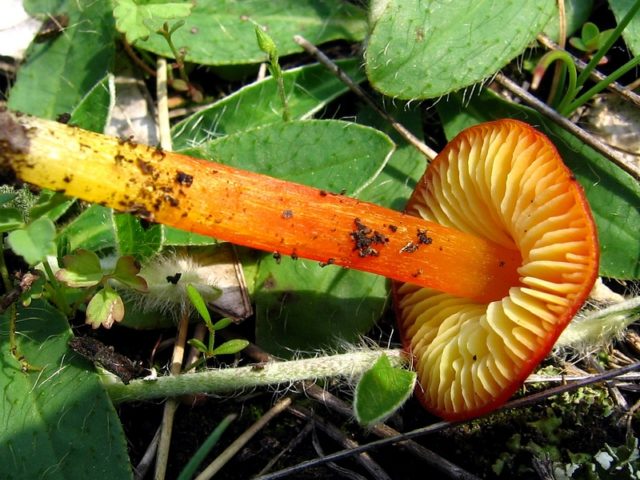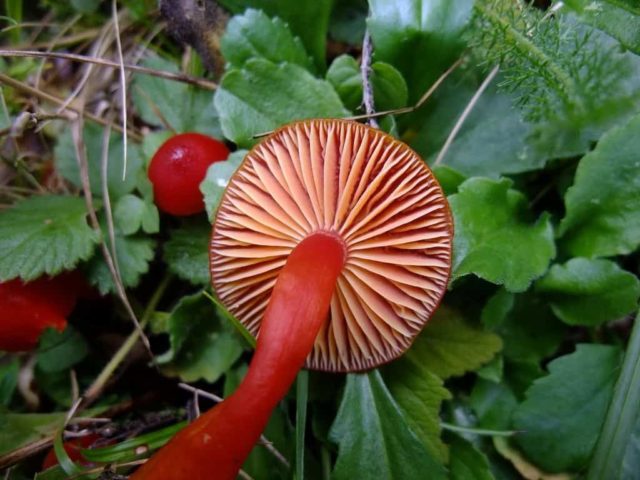Content
Hygrocybe turunda is an inedible representative of the Gigroforov family. It grows in mixed forests, causes severe stomach poisoning when eaten, belongs to the inedible category. In order not to be mistaken during a quiet hunt, you need to know the external description of the fruiting body, view photo and video materials.
What does a hygrocybe turunda look like?
Acquaintance with the hygrocybe turunda must begin with the external characteristics of the fruiting body. The convex cap straightens out as it grows, leaving a small depression in the center. The surface is covered with a matte, scaly skin of a bright orange color. The edges are brittle, curved inward. In wet weather, the surface of the cap becomes covered with mucus.

The species grows mainly in mixed forests.
The bottom layer is formed by thick, sparsely planted plates that descend to the stem. Reproduction occurs by white microscopic spores, located in a light red powder.
The curved leg is thin, long, cylindrical in shape. The surface is painted to match the cap, but to the base the rind is covered with a whitish thick bloom. The pulp is dense, tender, tasteless and odorless.
The gugrocybe turunda, like any mushroom, has similar counterparts. These include:
- Scarlet is an edible species. It can be recognized by its bell-shaped hat, bright red or faded orange. The fungus is found in open areas from late summer until the first frost. Due to the lack of mushroom taste and aroma, the species has no nutritional value. Many mushroom pickers, after heat treatment, fry the harvested crop, stew, prepare conservation for the winter.
The mushroom is eaten only after heat treatment.
- Conical - a poisonous form, when eaten, causes mild gastric poisoning. The mushroom has a small convex cap, 6 cm in diameter. The surface is covered with a dark brown skin, which is covered with a mucous membrane in rainy weather. The pulp is thin and fragile, tasteless and odorless, with mechanical damage it turns black.
The species is common in deciduous forests, bears fruit in autumn
Where does hygrocybe turunda grow
Hygrocybe turunda prefers to grow in mixed forests, open meadows, dense grass and moss. It can also be seen in wet wetlands or along the coastline of water bodies.
The species is widespread throughout Russia. Fruiting during the entire warm period until the first frost.
Is it possible to eat a hygrocybe turunda
The mushroom belongs to the inedible group. Causes food poisoning when eaten.

Turunda is not used in cooking hygrocybe
The first signs of intoxication:
- nausea, vomiting;
- epigastric pain;
- diarrhea;
- headache;
- cold, clammy sweat.
Signs of poisoning appear 2 hours after eating. When the first symptoms appear, it is necessary to wash the stomach, take an absorbent, apply heat to the limbs and on the stomach. If, after the manipulations, relief does not come, you need to urgently call a medical team.
Conclusion
Hygrocybe turunda is an inedible representative of the mushroom kingdom. The species grows in mixed forests, bears fruit throughout the warm season. In order not to confuse it with edible mushrooms, it is important to know the external description, place and time of fruiting.










